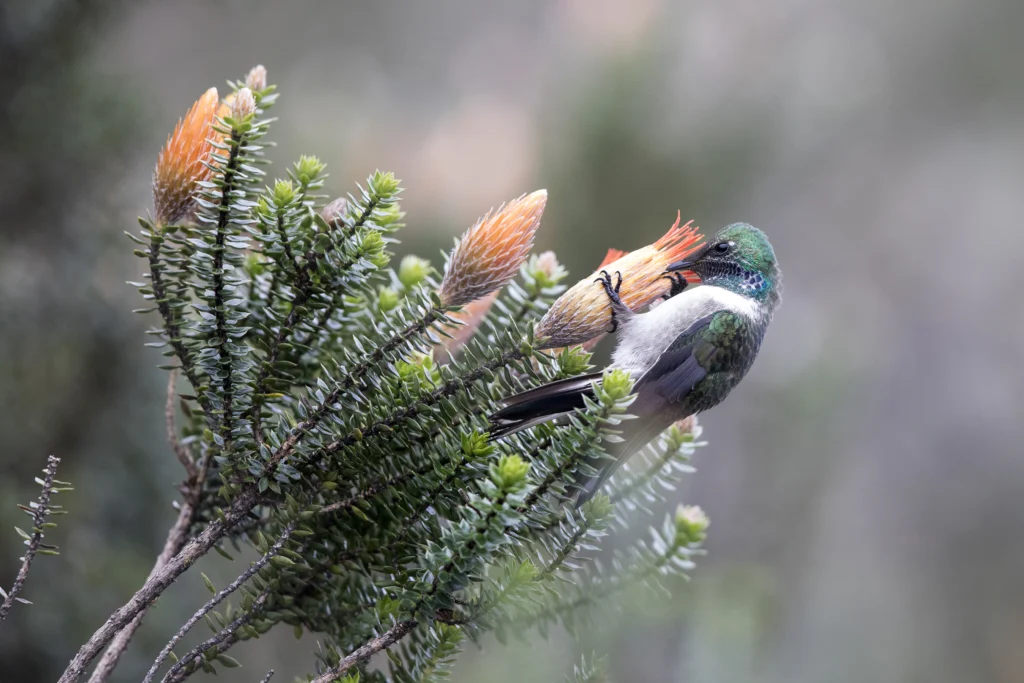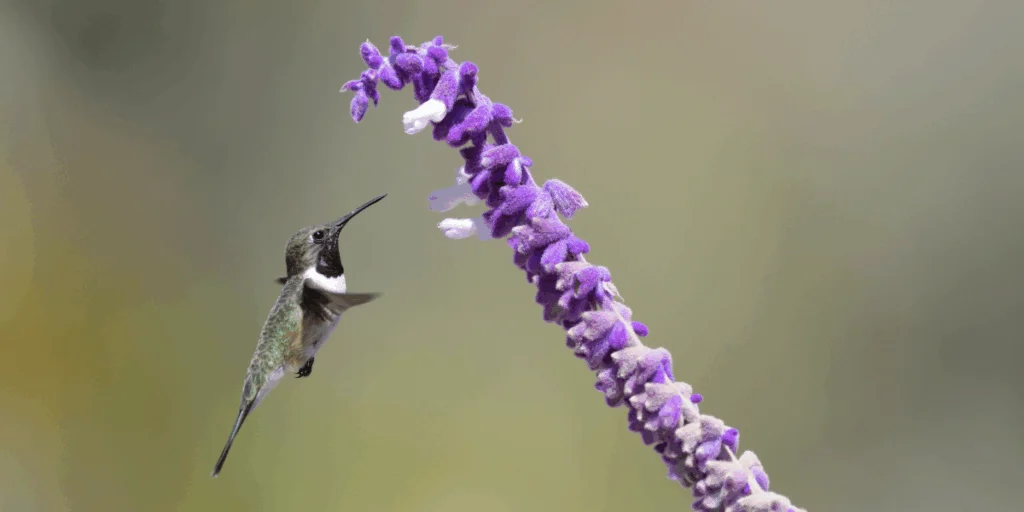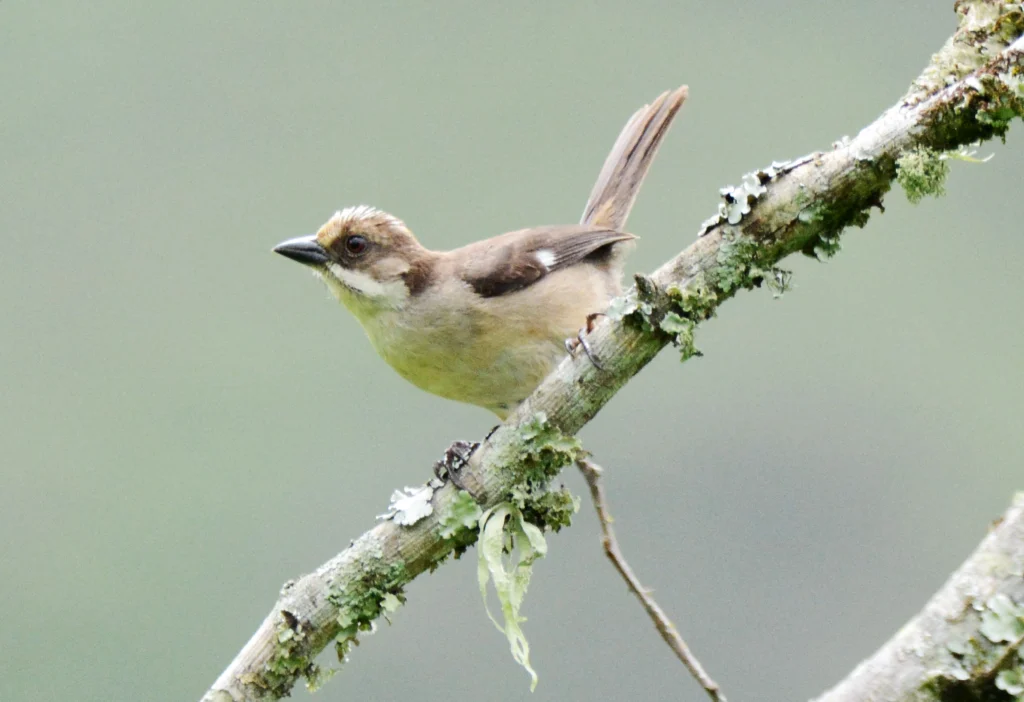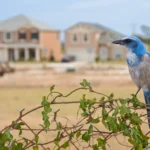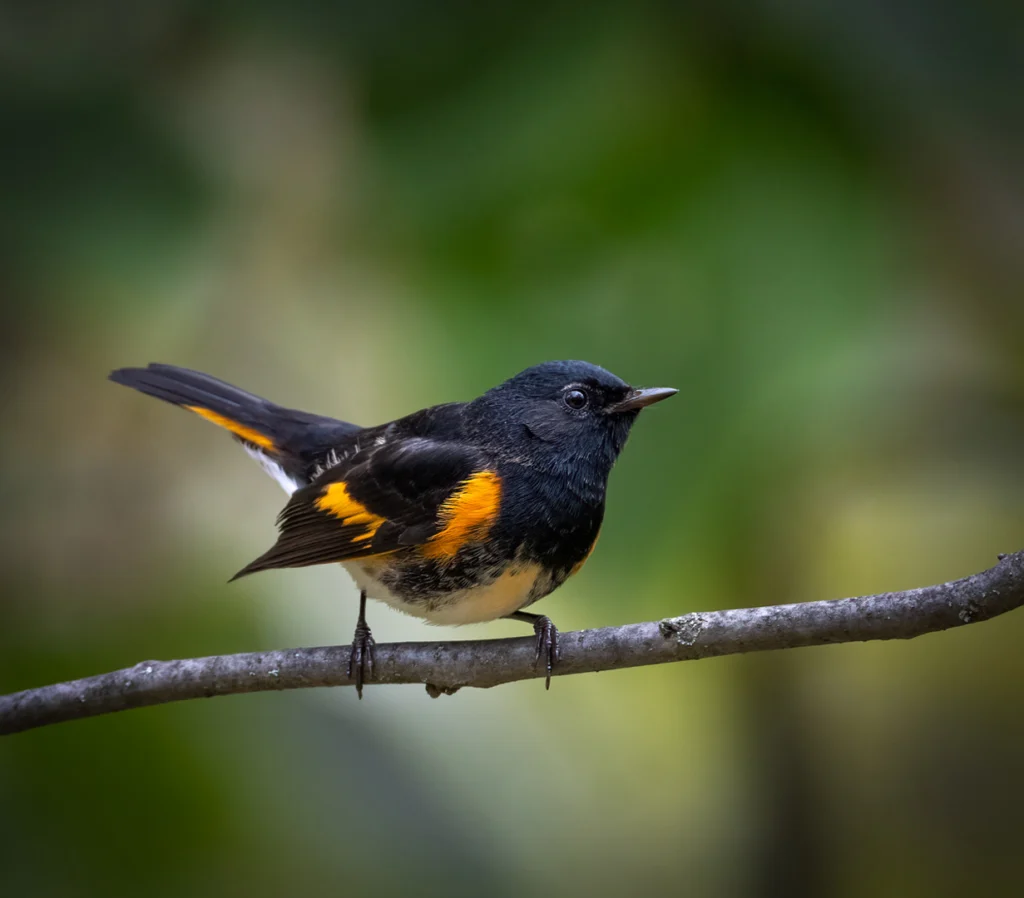Of the 149 species assessed, 93 percent met their population-based target needed to prevent their imminent extinction. Only 10 species fell short. Five are hummingbirds, including the Blue-throated Hillstar that Jocotoco and ABC are working to protect:
- Mexico: Short-crested Coquette, Oaxaca Hummingbird
- Ecuador: Blue-throated Hillstar, Lilacine Amazon, El Oro Parakeet, Pale-headed Brushfinch
- Perú: Cometa de vientre gris, Batará de Marañón, Pinzón Inca Pequeño
- Chile: Chilean Woodstar
“Hummingbirds are extreme when it comes to being a bird, in every way,” said Lebbin. “They’re some of the smallest birds. They have the fastest metabolisms. They have lots of extreme aspects of their biology, but part of this is that they also have a lot of endemism, a lot of small-range species.”
Such small ranges can make species especially vulnerable to habitat loss due to human activities. Take the Chilean Woodstar, a hummingbird native to northern Chile in one of the world’s driest deserts. “The region looks like a moonscape,” Lebbin said, “but then you have these stream valleys that bisect this arid desert, and in the ephemeral streams, there is vegetation. That’s where this hummingbird lives, at the most extreme end of where a hummingbird can survive. And of the four main valleys in Chile where the species was once found, the northern two have been almost completely converted to enclosed greenhouse agriculture. So now the Chilean Woodstar survives only in the two southernmost valleys. We’ve worked with local partners to protect some small refuges there, but it’s very challenging because the areas along the streams are the only arable lands for miles around. So the land prices are very expensive.”
For the area-based targets, 64 species — including the 10 that don’t meet the population-based target — did not meet habitat protection goals. Most of these species are found in Mexico, Colombia, Ecuador, Peru, and Brazil, and smaller numbers are in Panama, Venezuela, and Chile.
As for priority conservation areas, the researchers identified about 6,300 square miles (16,360 square km) as most critical to conserve these 64 species — an area that collectively is only 0.1 percent of the overall Latin American landscape, nearly the same size as the land area of Hawai‘i.
Many of the priority areas for protection are quite small. For example, the research found that Ecuador’s Blue-throated Hillstar could likely avoid extinction if an additional 157 acres of its habitat were protected. (More is better, of course!) Another priority conservation area can be found in northeastern Brazil — an unprotected 13,000-acre forest near the town of Murici in the state of Alagoas. Protecting this forest would help conserve nine bird species that do not meet their minimum conservation targets by adding an average of 11.1 percent to their collective Area of Habitat. (The nine species are Forbes’s Blackbird, Pernambuco Foliage-gleaner, White-collared Kite, Scalloped Antbird, Alagoas Antwren, Alagoas Tyrannulet, Pinto’s Spinetail, Orange-bellied Antwren, and Long-tailed Woodnymph, which are all classified on the Red List as Vulnerable, Endangered, or Critically Endangered.)
Protecting the prioritized habitats required to conserve the 64 species would do much more than benefit birds: The sites overlap significantly with habitat for other threatened species. For example, the priority areas overlap with 108 Key Biodiversity Areas and 29 Alliance for Zero Extinction sites, which highlight the importance of these areas for threatened amphibians, reptiles, mammals, freshwater fish, and other species found nowhere else.
